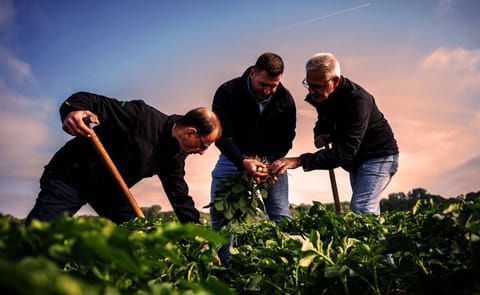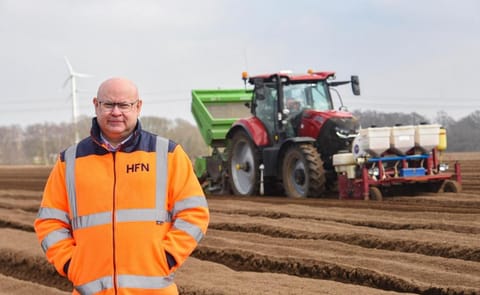Blackleg symptoms in the potato plant and tuber.
New ‘Focus on Potato’ Webcast Helps Potato Growers Minimize the Spread of Blackleg

Blackleg, caused by strains of soft rot bacteria known as Dickyea, has traditionally had little impact on North American potato production, but it now appears to be on the move throughout Europe and could increasingly threaten growers in the Eastern United States.
The Plant Management Network (PMN) has released a new presentation entitled “Dickeya: A Scottish, UK and European Perspective” to provide growers and crop consultants with an overview of the history of the disease in Europe and an introduction to Dickeya solani, a new aggressive pathogen strain contributing to the increase in incidence and spread of blackleg.

Gerry Saddler, Ph.D. Deputy Head of Science & Advice Scottish Agriculture (SASA) (Courtesy: AHDB Potatoes)
The webcast, developed by Gerry Saddler, Deputy Head of Science & Advice Scottish Agriculture with the Scottish Government, details their country’s potato production practices and explains why they have adopted a national zero-tolerance approach to the presence of Dickeya strains.
The presentation discusses in detail:
- Causes of blackleg and symptoms exhibited by different strains
- Conditions that encourage infection and common transmission methods
- Inspection and testing practices employed in Scotland
- Effective control measures to limit spread
View Presentation
“Dickeya: A Scottish, UK and European Perspective”By Gerry Saddler, Ph.D. Deputy Head of Science & Advice Scottish Agriculture (SASA)
The 40-minute presentation will remain open access through July 31 in the Focus on Potato webcast resource.






